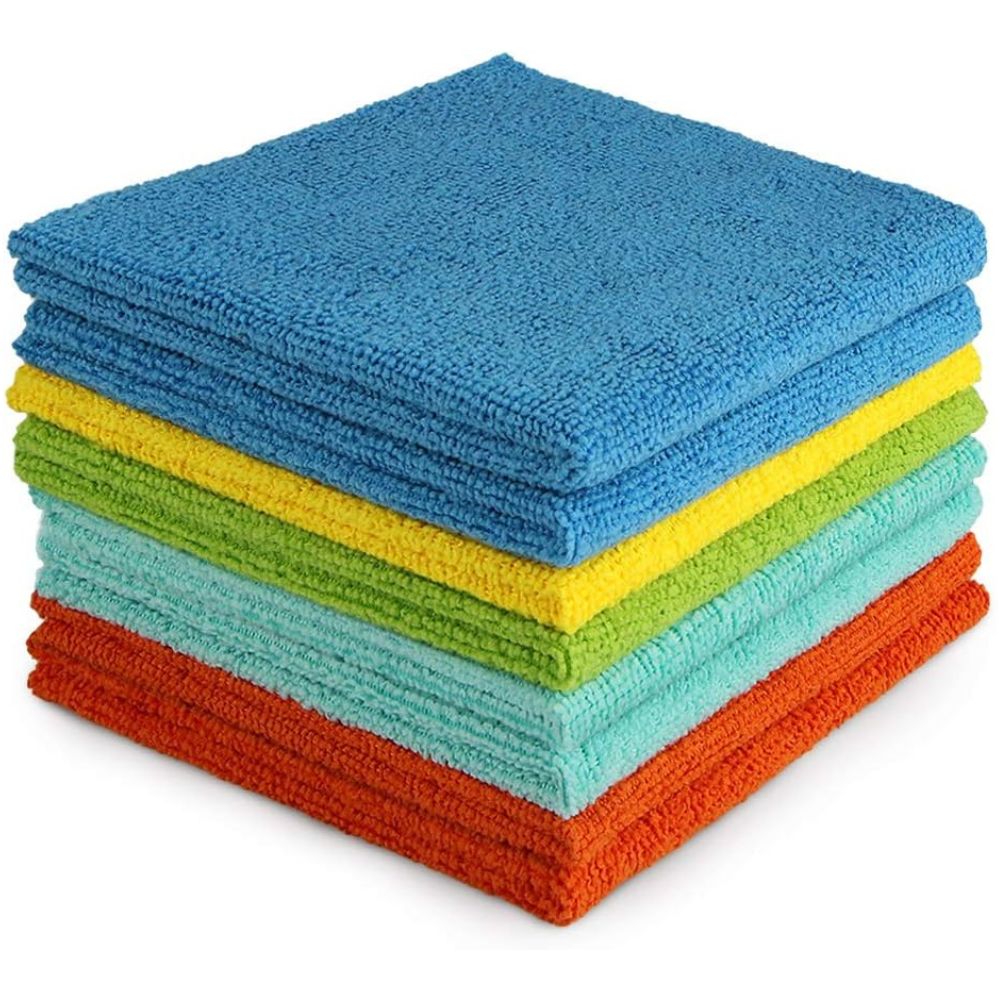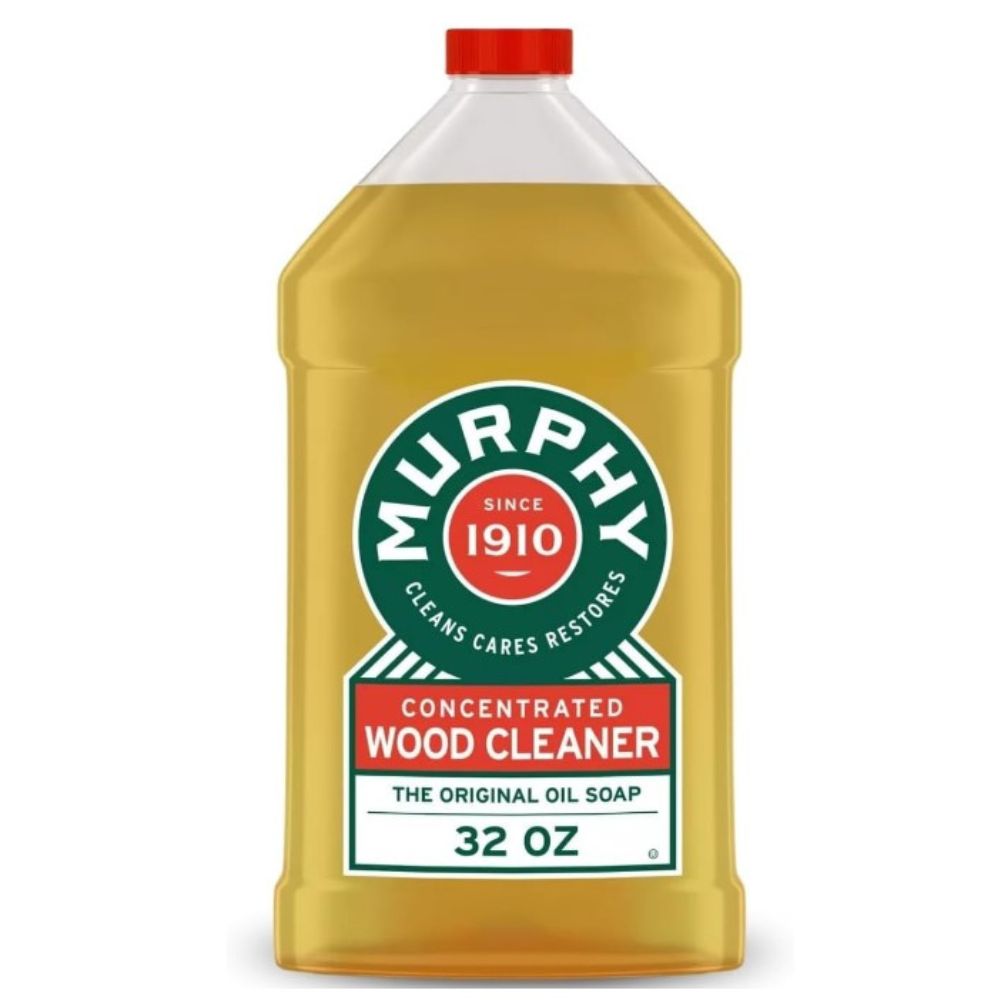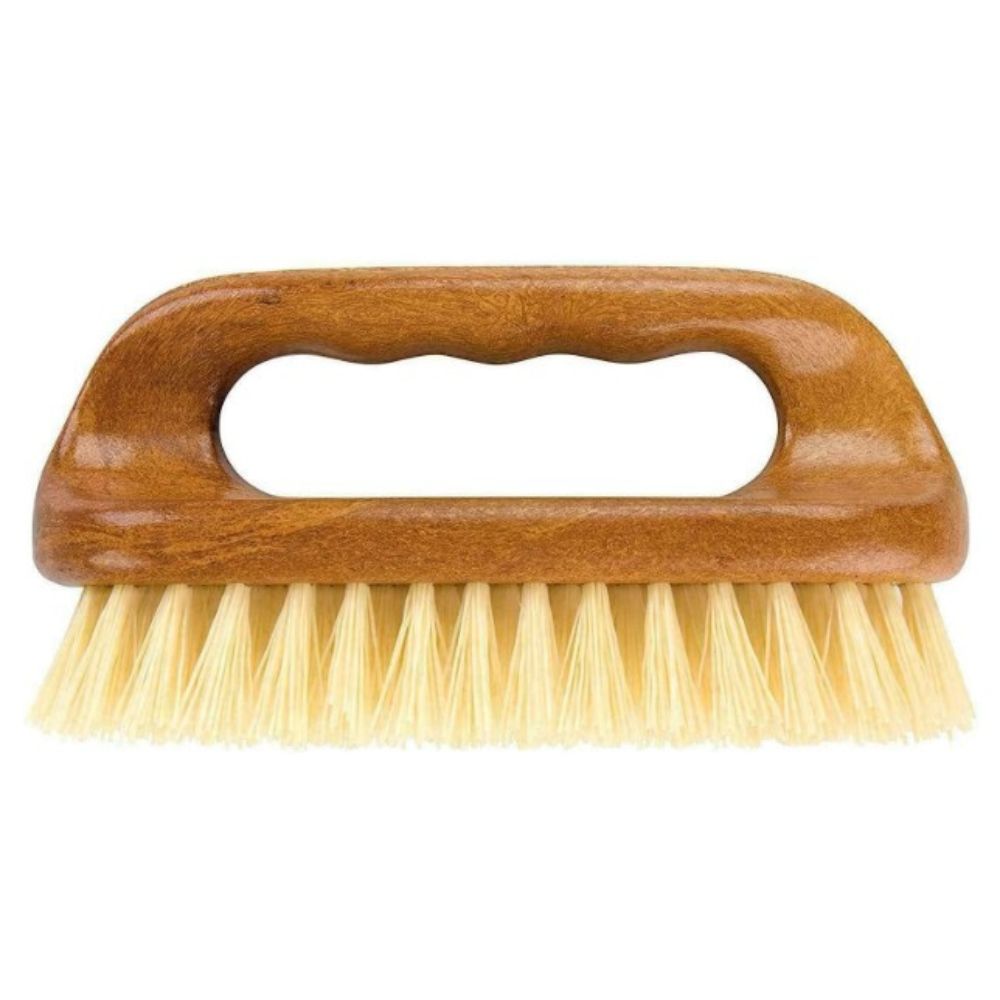How to clean kitchen cabinets – 7 easy steps for a hygienic finish
Master how to clean kitchen cabinets inside and out with our simple step-by-step guide
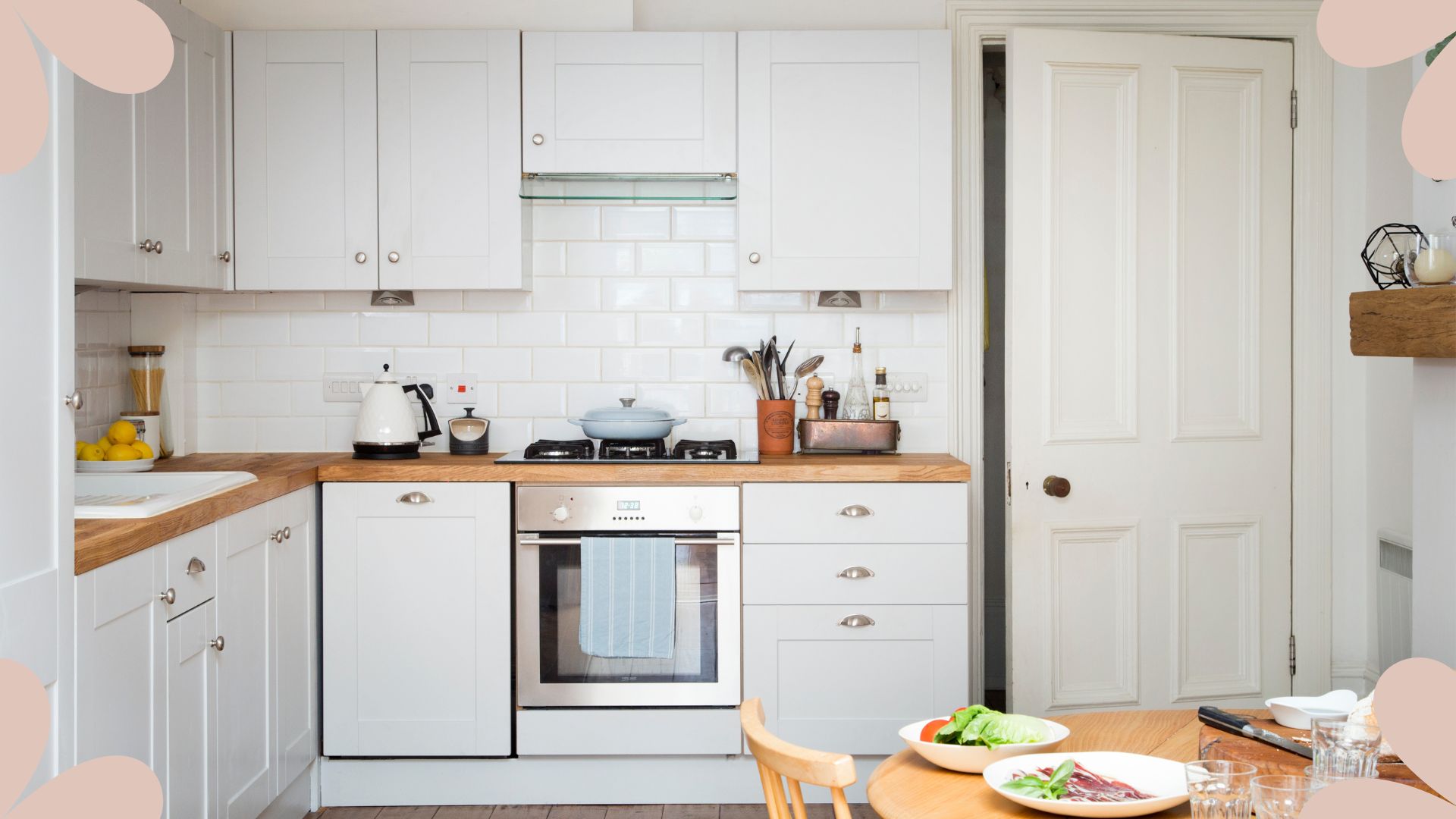
Emily Smith
For something that takes up the majority of space in your kitchen, it’s no surprise the difference that knowing how to clean your kitchen cabinets makes. And it’s not just aesthetic purposes too, keeping on top of your cupboards cleanliness will mean a fresher and more sanitary cooking space.
Our kitchen cupboards can hide a multitude of sins, whether that’s an overcrowded baking ingredient hoarding or your questionable mug collection. Either way, making sure the very thing that shields the chaos is kept clean and tidy is a great way of keeping your kitchen looking its best.
So whilst kitchen cabinets can be made of various materials, from hardwood to particle board, it’s important to include them in your kitchen cleaning routine. And why not use our easy 7-step guide to cleaning kitchen cabinets with ease?
How to clean kitchen cabinets in seven simple steps
The key to being more efficient when cleaning kitchen cabinets is to take the time to declutter first, to save time in the long run by eliminating items that don't need to be there. Once your kitchen cabinets look pristine after a thorough clean of both the inside and out you might want to take a look at our guide on organising kitchen cabinets to keep them orderly – this will make the cleaning process even easier for next time.
Before you start cleaning check your cleaning toolkit has at least three of the following:
- Handheld vacuum – a great option to quickly remove dust from the top of kitchen cabinets and food crumbs from the inside of cabinets.
- Cleaning cloth – a soft sponge or thick and soft cotton or clean microfibre cloth is best for cleaning wood cabinets.
- Soft bristle brush – to clean lower cabinets and drawers that may have dried food, oil, grime, and liquid spills.
- Degreaser – a mixture of warm water and baking soda or a 50/50 solution of white vinegar and warm water.
- Dishwashing liquid – a few drops of dish soap mixed with very warm water.
- All-purpose cleaner – that is gentle, made for wood, and has been spot-tested to make sure it does not damage your wood finish.
- Wood oil and soap cleansers – such as Murphy Oil Soap, one that is gentle and specially formulated so as not to damage your wood finish.
When it comes to shop-bought products, always follow the manufacturer's directions and do a spot test at a hidden location to observe how the cleaner reacts with your cabinets.
1. Start by cleaning the top of the cabinets
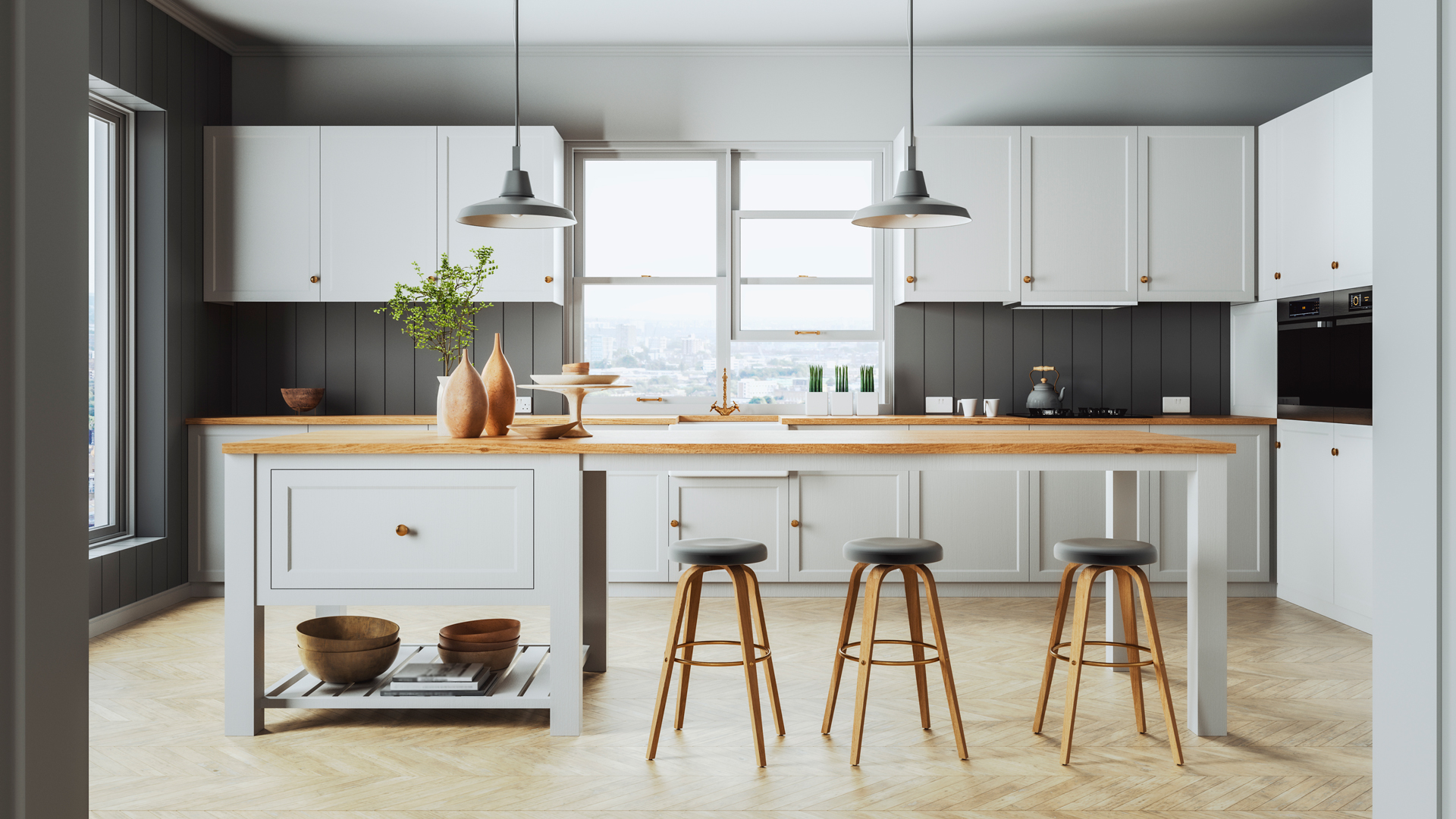
Start at the top to avoid any dust from falling onto clean surfaces below and undoing all your hard work, because unless your kitchen cabinets sit flush with the ceiling, the tops are the ideal surface to harbour hidden dust – and being out of sight, out of mind it can accumulate quickly.
Sign up to our free daily email for the latest royal and entertainment news, interesting opinion, expert advice on styling and beauty trends, and no-nonsense guides to the health and wellness questions you want answered.
To remove the dust most effectively we recommend using a handheld vacuum to tackle the majority of the dust then take a damp cloth to wipe over the surface to remove the remaining traces.
Avoid using too much water, as it can damage the outer shell of your kitchen cabinets over time. Water can cause the finish to become dull, the wood to darken, and laminated panels to peel or separate. After wiping down your cabinets, be sure to use a dry microfibre cloth to wipe away any excess water, "drying your cabinets is a very important step as water can ruin them over time,” warns Ivan Ivanov, cleaning expert at End of Tenancy Cleaning.
2. Empty the contents
Before you start cleaning inside you'll need to empty the contents. If this feels overwhelming in your small kitchen we suggest tackling one cabinet at a time. Take everything out and place the items on a nearby kitchen surface. Since you'll be removing all items, including food, drink, and kitchen essentials, this is also a great time to toss out expired staples such as old grains and consider replacing almost empty products.
Also, spice containers and sauces can easily become sticky or grimy since we tend to reach for them in the middle of cooking. Wipe these items clean using a cloth and hot, soapy water, and allow them to dry while you continue cleaning the cabinets.
3. Pre-clean inside with water first
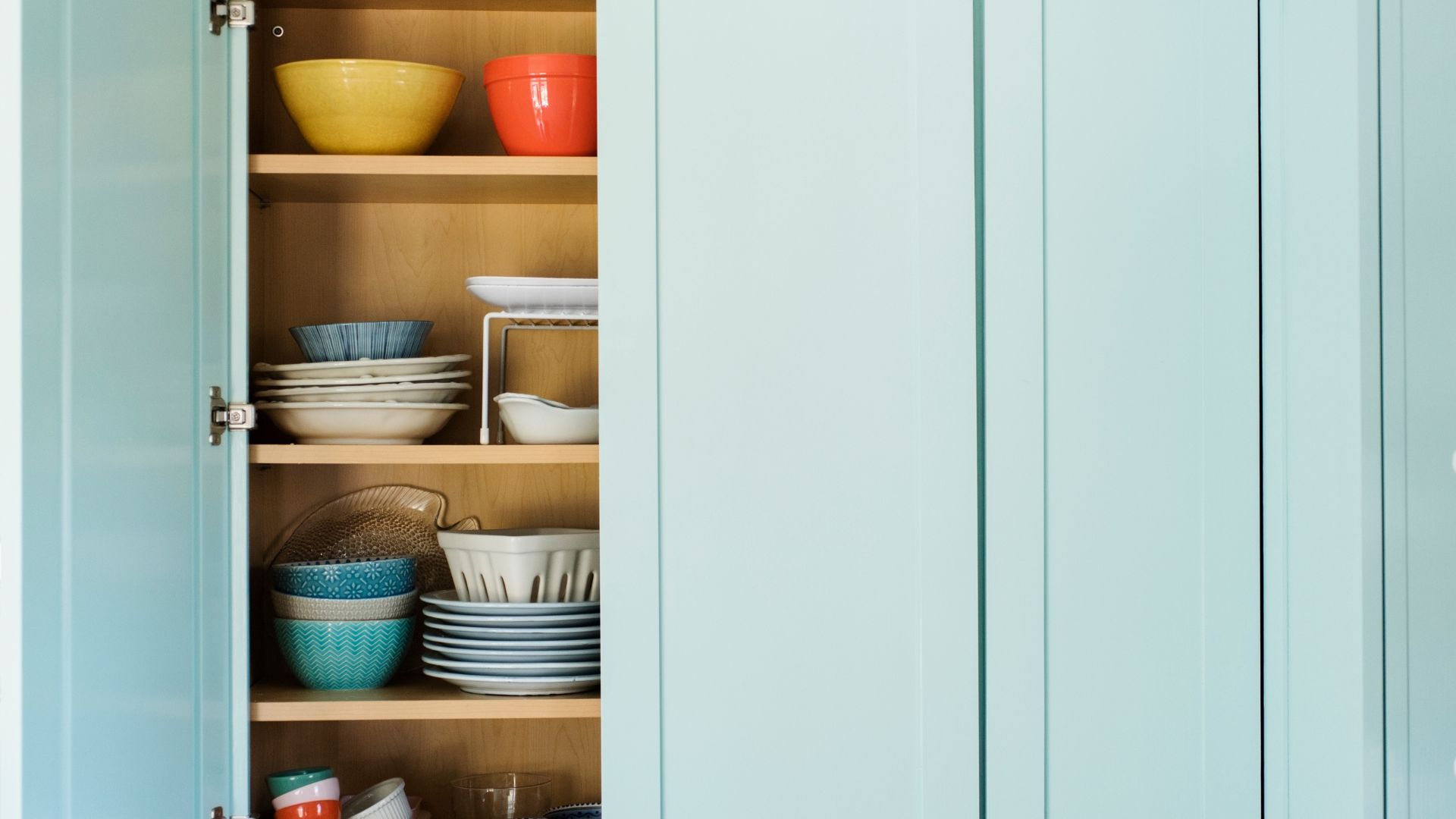
To make the process of cleaning the inside of your kitchen cabinets more effective, first, take a damp cloth and wipe any crumbs or liquid spills off shelves before proceeding with your cleaning solution.
4. Use a cleaning solution to clean inside
Once you've removed the food traces and crumbs it's time to give the surfaces a thorough clean. Interior shelves may have a lot of crumbs and residue that a vacuum can remove before cleaning and wiping them down.
Start from the top interior shelves using your preferred cleaning solution – whether choosing a retail cleaning product or cleaning with vinegar. "The majority of cabinets are made from different types of wood and for that, we recommend using 4.4 litres of water dilute 1/4 cup of Oil Soap Wood Cleaner, Murphy's Oil Soap is highly recommended," advises Ivan. "When cleaning inside the kitchen cabinets always start from the top and work your way down."
“A tip for cleaning the inside of cabinets is to clean at eye level," advises Heather Nixon, sustainability, NPD, and regulatory manager at Bio-D. "As well as helping you to see any spills or stains on the inside shelves, it also helps you to see any grease or grime clearly on the cabinet surfaces from all angles so you don’t miss any spots.” Don't forget to spray and wipe the edges and sides of your cabinets.
If you're using a spray cleaner always follow up with a wipe-down of clean water to remove cleaning product residue. When these products are left on wood surfaces to dry, they can dull the wood's finish over time. Likewise, when you clean your kitchen cabinets with soap and water, you should wipe the surfaces free of soap with a wet, warm cloth to prevent discolouration.
5. Clean cabinet fronts and sides
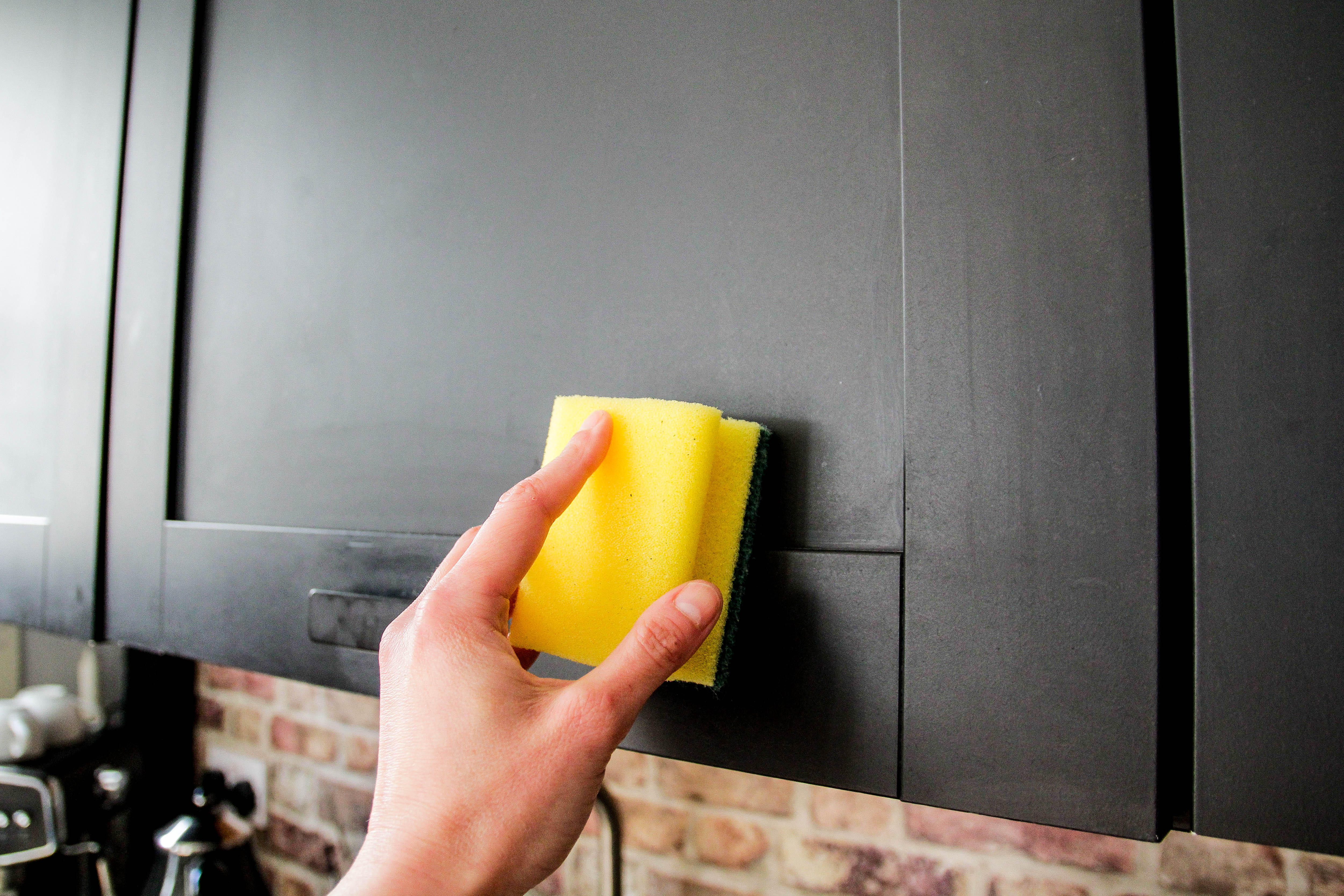
Once all interior shelves have been cleaned you can clean and degrease exterior cabinet doors. Use your microfibre cloth and your chosen cleaning solution to wipe the front, sides, and bottom of your kitchen cabinets.
“Whilst the outside of your kitchen cabinets may look clean, they are often covered with a thin, sticky film of grease and grime – especially those next to the hob," says Heather. “The best way to remove this is to use a cleaning product that contains orange oil – which is a natural degreaser. A soft scourer (think material rather than metal to avoid scratching) helps to displace the film and leave your cabinets fresh and clean."
Apply your degreasing product with a regular cleaning cloth, and then let the solution sit for 10-15 minutes. This allows enough time to break down those thick, tough stains. This will also reduce the amount of elbow grease you'll need to use afterwards.
Once the degreaser has done its job, wipe with a clean, damp cloth using a bit of pressure to remove food, grease, and liquids. If necessary, use your bristle brush to scrub off the grease on cabinet doors, and use the toothbrush to get into interior corners. Thick grease build-up is best removed with a gentle scrub using a baking soda and water paste and a soft-bristled brush.
If your kitchen cabinets have glass panes use the same method of cleaning windows to get a streak-free finish.
6. Clean cabinet handles
Finally, scrub knobs and handles clean. As one of the areas we touch most while using the kitchen, it's unsurprising how greasy and unhygienic kitchen cabinet handles can become.
Scrub the hardware with a cloth or small soft bristle brush dipped in a 50/50 solution of vinegar and warm water to welcome the disinfecting properties for the cleaning process. While you are tending to the finishing If needed, remove the hardware from drawers and cabinets to soak and clean separately.
7. Restock and sort
Take the opportunity of cleaning kitchen cabinets to implement better kitchen storage by, "bringing everything out and reorganizing it in a more streamlined fashion, " suggests Sarah Savery-Smith, brand director of ProCook. “The secret is to work smarter, not harder.”
“Keen bakers may want to spend time organizing their baking accessories such as storing measuring cups and scales neatly into a box, so everything is conveniently in one place. The less room bulky items can take up in your cupboards, the better. Look for smarter ways you can stack pots and pans, such as sets of roasting tins that nest within one another. When packing it all away again, remember to place everything back in order of need, with the most frequently used at the front – you’ll be thanking yourself later."
How often should you clean your kitchen cabinets?
Similar to the answer of how often you should clean your oven and how often you should vacuum the frequency with which you clean your kitchen cabinets will depend on how often you cook and use your cupboards. We would recommend performing a few routine maintenance tasks to keep your kitchen cabinets clean for longer periods.
Cleaning up spills as soon as they happen is the best preventative measure to keep your kitchen cabinets spotless. Cabinets near the cooktop or range hood should be degreased once a month. Dusting the top and front of cabinets twice a month with a soft cloth will prevent a build-up that proves tougher to tackle later down the line.
We'd also recommend that you try to keep heat-producing appliances like coffee machines and kettles away from cabinets to prevent excess heat and moisture from damaging surfaces.
If you've been inspired to get cleaning, you may be interested in our guides on how to clean a fridge, how to clean a stovetop, and how to clean your microwave.
Now you know how best to clean your kitchen cabinets, a task which could be a great daily habit to keep your home clean and tidy, why not start working on your spring cleaning checklist?
Amy Hunt is an experienced digital journalist specialising in homes, interiors and hobbies. She began her career working as the features assistant at woman&home magazine, before moving over to the digital side of the brand where she eventually became the Lifestyle Editor up until January 2022. Amy won the Digital Journalist of the Year award at the AOP Awards in 2019 for her work on womanandhome.com.
- Emily SmithDigital lifestyle writer


